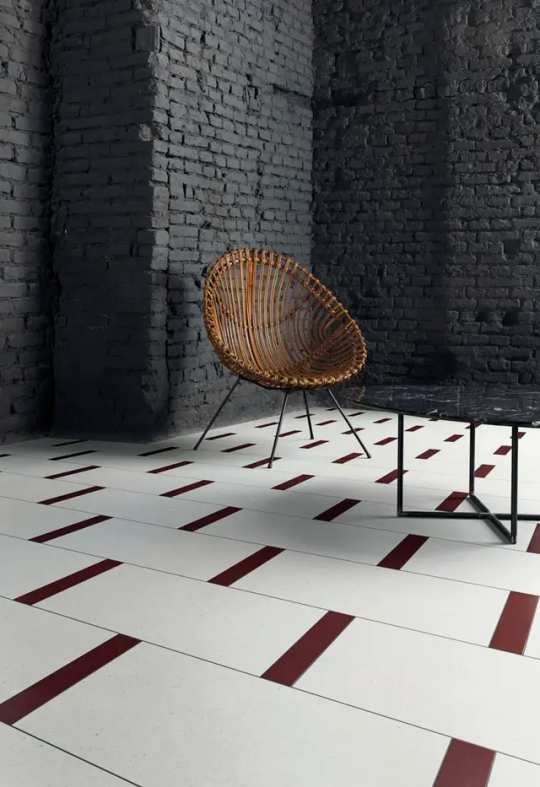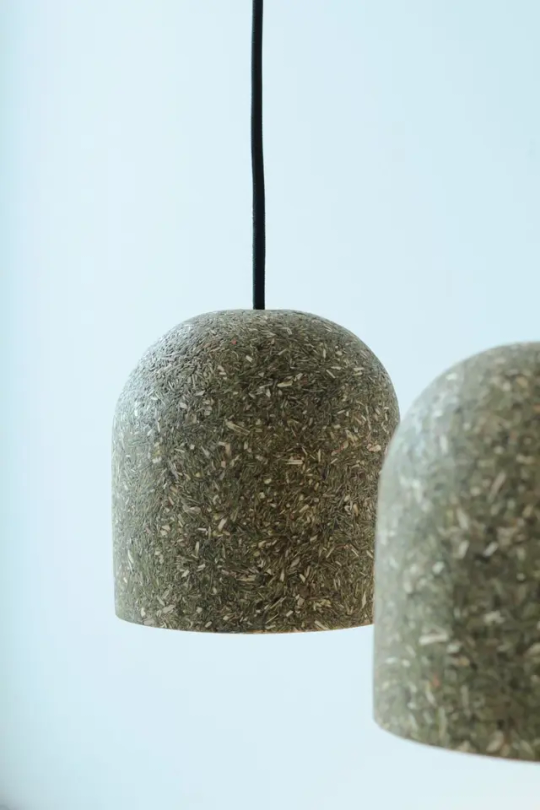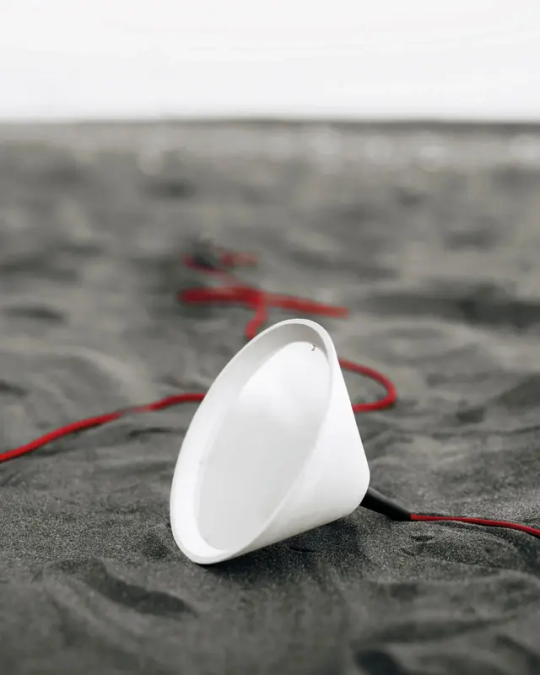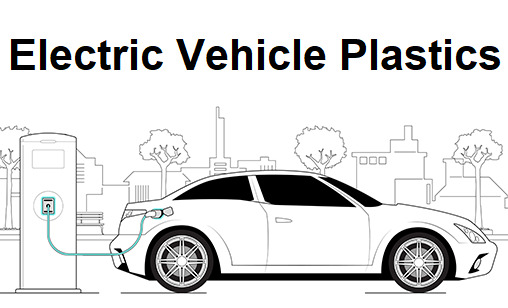#eco-innovations
Explore tagged Tumblr posts
Text
Celebrating Women Who Changed the Earth: A Tribute to Environmental Pioneers

View On WordPress
#Aubrey-Anne Laliberte-Pewapisconias#biodiversity#biodiversity loss#Candace Savage#carbon emissions reduction#Clean Energy#clean environment#Climate Action#climate activists#climate change#climate crisis#climate leaders#climate solutions#community-based conservation#conservation#Conservation Efforts#Conservationists#Dr. Kaminskyj#Earth Day activists#Earth Protection#Eco-Activism#eco-conscious women#eco-consciousness#Eco-friendly solutions#eco-innovations#eco-pioneers#eco-warriors#ecofeminism#ecological balance#ecological footprint
2 notes
·
View notes
Text
When we think of sustainable materials, bamboo, cork, recycled stone and reclaimed teak often come to mind. These building and surface materials are used extensively in both residential and commercial projects, enough to solidify them as the eco-friendly future of established architectural practices.
But what if we went even further? Creative and experimental designers worldwide are embracing much more unusual sustainable materials in a wide range of projects, be these sturdy floorboards and insulating panels, or small-scale decorative elements such as lamps, trays, vases and other furnishings. With designs hailing from Singapore and Indonesia, as well as distant studios in Italy and Palestine, here are the materials of tomorrow.

Mogu’s mycelium floor tiles
Mushroom filaments may not seem like the sturdiest base for hardwearing floors, but the Italian designers behind Mogu would argue otherwise. Transformed into resilient tiles appropriate for luxury residences and even commercial spaces, the mycelium structure is topped with a layer of bio-based resin, granting it resistance to scratches and abrasions rivalling traditional flooring materials.

Orange peel and pine needles make up the sustainable lampshades by Caracara Collective
Turning orange peel into useable furnishings and décor pieces is no small feat, yet the people behind the circularity-focused Caracara Collective in Finland have mastered this singular art. Inspired by the abundance of the natural, inherently sustainable materials around them, the designers created a series of lampshades made of orange peel, as well as pine needles from discarded Christmas trees.
As the collective puts it: “It takes around 20 squeezed oranges to create one lampshade. In other words, each lampshade is the by-product of someone drinking two litres of orange juice.”

Markos Design’s Ostra lamp, made of discarded oyster shells
Discarded oyster shells are similarly repurposed on the island of Cyprus, transformed by Markos Design into Ostra, a ceramic-like biomaterial. Ostra is worked into statement lamp designs, naturally hardwearing thanks to the oysters’ high concentration of calcium carbonate, which also lends cement and concrete considerable strength.
#solarpunk#solar punk#reculture#solarpunk aesthetic#eco-design#materials innovation#solarpunk futures
139 notes
·
View notes
Text

The Maldives Floating City, set to open in 2027, will provide eco-friendly, floating residences for 20,000 people, adapting to rising sea levels.
#Maldives#floating city#climate change#sea level rise#eco-friendly architecture#sustainable living#urban planning#2027#innovative design
101 notes
·
View notes
Text




ciudad enamorada - day 19
aspiration progress:
Attempt to Convince a Sim to Vote on a Neighborhood Action Plan
Vote on Neighborhood Action Plans two separate times
Reach level 10 of the Civil Designer Career
#finally completed the eco innovator aspiration HAPPY DAYS#now the only ones i haven't completed are the jungle explorer ones#i think i'll go back and complete them after i've finished the globetrotter challenge tbh#ts4globetrotter#ts4 globetrotter#globetrotter challenge#globetrotter: r8#the sims 4#ts4#the sims#ts4 gameplay#ch: imogen#ch: seren#ch: aiden#well aiden's legs
10 notes
·
View notes
Quote
Constant innovation constantly accepted by everybody will lead to ranks of dwarfs sitting on the shoulders of other dwarfs.
Umberto Eco, On the Shoulders of Giants
#innovation#creation#creativity#values#judgment#criticism#quotes#Eco#Umberto Eco#On the Shoulders of Giants
22 notes
·
View notes
Text
George R.R. Martin calls it “magic”! The dire wolf is back, thanks to Colossal Biosciences!
George R.R. Martin calls it “magic”! The dire wolf is back, thanks to Colossal Biosciences. Read how Martin’s fantasy became reality in this de-extinction breakthrough!
Read the full article right here: https://www.theomenmedia.com/post/colossal-biosciences-dire-wolf-revival-kit-harington-weighs-in-with-a-game-of-thrones-twist

#Dire Wolf#De Extinction#Colossal Biosciences#George RR Martin#Game Of Thrones#Conservation#Biodiversity#Science Breakthrough#Red Wolf#Eco Innovation
2 notes
·
View notes
Photo

🌿✨ Welcome to the future! Check out our latest creation, the Eco-Friendly Futuristic City wallpaper! This stunning cityscape is where sleek skyscrapers meet lush greenery, creating a breathtaking blend of technology and nature. 🌆💚 If you're a fan of innovative architecture and want to bring a touch of the future to your screens, this wallpaper is perfect for you!
Imagine living in a place where the hustle and bustle of city life harmonizes with nature's beauty. This design captures that dream, showcasing a vibrant urban environment that prioritizes sustainability and eco-friendliness. 🌍🏙️
Whether you're looking to spruce up your desktop or just love the idea of a greener future, this wallpaper will surely inspire you every time you look at it!
Ready to transform your screens? Click here to explore the Eco-Friendly Futuristic City and bring this vision to life!
Happy decorating! 🎉
#Eco-Friendly#Futuristic#Cityscape#Architecture#Skyscrapers#Greenery#Nature#Urban#Sustainable#Innovative#Wallpaper#Design#Technology#Modern#Landscape#City Life#Scenic#Art#Creative#Digital Art
2 notes
·
View notes
Text
Sanctuary in the Glass Dome

This breathtaking artwork portrays a tranquil scene of a transparent, dome-like structure nestled in the heart of a lush mountain valley. Surrounded by vibrant flowers, lush greenery, and flowing water, the dome appears as a harmonious fusion of futuristic architecture and untouched nature. Inside the dome, a lone figure sits in quiet contemplation, evoking a sense of peace and solitude. Towering mountains in the misty background frame the serene composition, creating an ethereal atmosphere that celebrates the coexistence of human innovation and the natural world.

.: Material: 0.25” thick grade-A acrylic with white vinyl backing .: Available in 5 sizes .: Horizontal and vertical options .: Hand-polished, crystal clear edges .: Fitted with french cleat backing for easy and secure hanging .: Screws for installing the hanging included
Click here
#Glass dome#Nature#Futuristic architecture#Mountains#Tranquility#Solitude#Lush greenery#Vibrant flowers#Flowing water#Harmony#Misty landscape#Contemplation#Eco-design#Innovation#River#Peaceful#Natural integration#Sustainability#Serene environment#Valleys#home & lifestyle#home decor#home design
2 notes
·
View notes
Text
Sustainable Fashion: A New Era for Style and Responsibility
Introduction
The fashion industry is one of the largest contributors to environmental degradation, accounting for significant water usage, greenhouse gas emissions, and waste generation. In response to these challenges, sustainable fashion has emerged as a solution to balance style with environmental and social responsibility. This movement seeks to reform how clothing is designed, produced, consumed, and discarded, making it a key player in the fight against climate change and resource depletion.
The Problem with Fast Fashion
Fast fashion, characterized by mass production of inexpensive and trendy clothing, has dominated the industry for decades. While it has made fashion accessible to millions, its environmental and social costs are staggering.
Resource Depletion: Producing textiles, particularly cotton and synthetic fibers, demands vast amounts of water and energy. For instance, making one cotton T-shirt can require up to 2,700 liters of water.
Carbon Emissions: The fashion industry accounts for approximately 10% of global carbon emissions, with synthetic fibers derived from fossil fuels being major contributors.
Waste Generation: Over 92 million tons of textile waste are generated annually, much of which ends up in landfills or incinerators.
Exploitation of Labor: Fast fashion often relies on low-cost labor in developing countries, where workers may face unsafe conditions and unfair wages.
What is Sustainable Fashion?
Sustainable fashion aims to mitigate these issues by adopting practices that respect the environment, uphold ethical labor standards, and encourage mindful consumption. It incorporates several principles:
Eco-Friendly Materials: Using organic, biodegradable, or recycled materials such as organic cotton, hemp, bamboo, and recycled polyester reduces reliance on virgin resources.
Ethical Production: Ensuring fair wages, safe working conditions, and labor rights for workers throughout the supply chain.
Waste Reduction: Prioritizing durability, repairability, and recyclability of garments to minimize waste.
Transparency: Providing consumers with information about sourcing, production processes, and environmental impact fosters accountability.
Innovations Driving Sustainable Fashion
The sustainable fashion movement is fueled by innovation and creativity, showcasing how technology and tradition can coexist to reduce environmental harm.
Textile Recycling Technologies: Advanced recycling methods can break down used textiles into their raw fibers, enabling the production of new fabrics without relying on virgin materials.
Alternative Fabrics: Lab-grown materials, such as mushroom leather (mycelium) and algae-based textiles, offer sustainable alternatives to traditional animal and synthetic products.
Digital Fashion: Virtual clothing, designed for social media or gaming, eliminates physical production, addressing issues of waste and resource use.
The Role of Brands
Brands play a crucial role in steering the fashion industry toward sustainability. Many companies are adopting innovative practices to reduce their environmental footprint:
Patagonia: Known for its environmental activism, Patagonia uses recycled materials and offers a repair program to extend the life of its products.
Stella McCartney: The brand prioritizes cruelty-free and eco-friendly materials, avoiding leather, fur, and PVC.
H&M Conscious Collection: A line featuring garments made from organic or recycled materials, showcasing the brand’s commitment to sustainable fashion.
However, the rise of “greenwashing” poses a challenge. Some companies market themselves as eco-friendly without making significant changes to their practices, making it essential for consumers to critically assess claims.
Consumer Role in Sustainable Fashion
Consumers hold significant power in driving the shift toward sustainability through their choices and behaviors:
Mindful Consumption: Opting for quality over quantity and avoiding impulse purchases can reduce demand for fast fashion.
Caring for Clothes: Properly washing, repairing, and storing garments extends their lifespan, reducing the need for new purchases.
Second-Hand Shopping: Buying pre-owned clothing from thrift stores or online platforms reduces waste and promotes circular fashion.
Supporting Ethical Brands: Choosing brands that prioritize sustainability and transparency encourages the industry to adopt better practices.
Challenges to Sustainable Fashion
Despite its promise, sustainable fashion faces several challenges:
Cost: Sustainable garments often come with a higher price tag due to ethical practices and eco-friendly materials, making them less accessible to some consumers.
Scale: Transitioning to sustainable practices on a global scale requires significant investment and collaboration across the supply chain.
Consumer Awareness: Many consumers remain unaware of the environmental impact of their clothing choices or the benefits of sustainable fashion.
The Future of Sustainable Fashion

The future of sustainable fashion lies in collaboration, innovation, and education. Governments, businesses, and consumers must work together to create a circular economy where waste is minimized, and resources are reused. Key developments include:
Legislation: Policies like the European Union’s “Green Deal” are pushing for stricter regulations on waste management and sustainable production in the fashion industry.
Education: Raising awareness about the environmental impact of fashion can empower consumers to make informed choices.
Technological Advancements: Continued innovation in materials science and recycling technologies will make sustainable fashion more accessible and cost-effective.
Conclusion
Sustainable fashion is more than a trend; it is a necessary evolution to address the pressing environmental and social challenges posed by the traditional fashion industry. By embracing eco-friendly materials, ethical practices, and mindful consumption, we can create a future where fashion reflects not just personal style but also a commitment to the planet and its people.
#“Best eco-friendly fashion brands for ethical clothing”#“Environmental impact of fast fashion and sustainable alternatives”#“How to make sustainable fashion choices”#“Tips for incorporating sustainable fashion into daily life”#Embracing Sustainable Fashion#Innovative sustainable materials in the fashion industry#What is Sustainable Fashion?
2 notes
·
View notes
Text
Electrolux Group Wins 11 iF Awards for Outstanding Product Design
Electrolux Group has won 11 coveted iF Design Awards for products designed to improve the daily lives of consumers in the home. The iF Design Awards jury recognized Electrolux Group for many aspects of design, including user interface. The iF Design Award is one of the most prominent design prizes in the world. This year, the competition received around 11,000 entries from 100 countries. The…

View On WordPress
#2023 Winners#AEG 7000 Series#AEG Appliances#AEG XTM Combo#Air Care#Air Fryer Range#AutoSense#Award-Winning Appliances#Bottom Freezer#Built-in Extractor#Care Products#Coffee Grinder#ComfortLift Dishwasher#Consumer Electronics#David Bentham#Design Awards#Design Recognition#Dish Care#Eco-Friendly#Electrolux#Electrolux 2023#Electrolux Innovation#Electrolux Sustainability#Espresso Machine#European Design#Experience Refrigerators#Fabric Care#Food Preparation#Food Preservation#Four-Stage Filter
2 notes
·
View notes
Text
Electric Vehicle Plastics Market: An In-Depth Exploration and its Contribution to a Circular Automotive Industry
The global electric vehicle plastics market size was estimated at USD 13.33 billion in 2030 and is anticipated to grow at a compound annual growth rate (CAGR) of 28.0% from 2024 to 2030. The industry is projected to witness significant growth in terms of consumption, on account of high application scope and increasing demand from the growing population. The Polypropylene (PP) resin demand in the Asia Pacific region is estimated to grow at the fastest CAGR over the forecast period. Strong government support & initiatives regarding emissions and increasing investment by manufacturers are propelling the growth of the region.

Electric Vehicle Plastics Market Report Highlights
The Asia Pacific region is estimated to grow at the fastest CAGR from 2022 to 2030. Increasing demand from the growing population coupled with environmental concerns among others are anticipated to drive market growth in the region
The battery segment is anticipated to register the fastest CAGR from 2022 to 2030. Batteries are one of the significant components of an EV and, in comparison to combustion engines, battery vehicles do not produce any emissions and are eco-friendly. The growing demand for EVs has promising growth for EV batteries
The exterior application segment accounted for the largest revenue share in 2021 and is estimated to continue its dominance over the forecast period due to the high demand in aesthetics
The BEV vehicle type segment led the industry in 2021 and it is anticipated to continue growing over the forecast period as PHEVs have higher maintenance costs than BEVs
For More Details or Sample Copy please visit link @: Electric Vehicle Plastics Market Report
Furthermore, EVs are efficient and require less maintenance as compared with traditional vehicles. These factors are expected to boost the demand for EVs, which is expected to drive the demand for plastics over the forecast period. Increasing utilization of plastics in EVs is anticipated to boost industry growth positively over the forecast period. Plastics have proven to perform well under harsh conditions through their resistance to shock, moisture, oxidation, and further maintaining their chemical and mechanical properties. Plastics will be crucial material for manufacturing lightweight and energy-efficient EVs. Based on resin type, PP is expected to witness major demand during the projected years.
Polypropylene is used in many components of the vehicle including bumpers, carpet fibers, cable insulation, and others. Properties, such as good heat, chemical & fatigue resistance, and others, are anticipated to drive the demand for PP in the industry. Major manufacturers are adopting expansion strategies, such as new product development, production facility expansions, mergers & acquisitions, and joint ventures. For instance, in October 2021, DuPont launched a new extension of its existing Zytel HTN range, named as Zytel 500 series. These products are developed to provide enhanced retention properties in e-mobility oils, electrically friendly characteristics, and a high Comparative Tracking Index (CTI).
EVPlastics #ElectricVehicles #SustainableDriving #EcoFriendlyCars #ElectricVehicleTech #CleanTransportation #GreenMobility #EVInnovation #PlasticsInEVs #FutureOfTransport #SustainableMaterials #EcoAutoDesign #EVManufacturing #PolymerInnovation #ZeroEmissionVehicles #GreenTechAuto #CleantechPlastics #EVDesign #EcoFriendlyPlastics #CircularAutoEconomy
#EV Plastics#Electric Vehicles#Sustainable Driving#Eco-Friendly Cars#Electric Vehicle Tech#Clean Transportation#Green Mobility#EV Innovation#Plastics In EVs#Future Of Transport#Sustainable Materials#Eco Auto Design#EV Manufacturing#Polymer Innovation#Zero Emission Vehicles#Green Tech Auto#Cleantech Plastics#EV Design#Eco-Friendly Plastics#Circular Auto Economy
2 notes
·
View notes
Text
Types of Fillers in Construction
Introduction Fillers play a pivotal role in construction, providing stability, strength, and insulation. Their selection is critical, affecting the cost, durability, and environmental impact of a project. This article delves into the various types of fillers utilized in the construction industry. 1. Natural Fillers Natural fillers like sand, gravel, and stone are ubiquitous in construction due to…

View On WordPress
#aerogel insulation in construction#carbon fiber for structural reinforcement#composite fillers in construction#construction aggregate materials#construction filler selection guide#construction fillers#construction industry standards for fillers#construction material innovation#cost-effective fillers for construction#durable fillers for construction#eco-friendly construction fillers#EPS beads in construction#fiber-reinforced concrete#fiberglass in concrete#fly ash concrete filler#graphene in building materials#insulation panels in construction#lightweight construction fillers#mineral fillers in concrete#natural fillers in construction#organic fillers for construction#silica fume in construction#specialty construction fillers#sustainable building materials#synthetic fillers for building#thermal insulation fillers#types of construction fillers
2 notes
·
View notes
Text

The Maldives Floating City, set to open in 2027, will provide eco-friendly, floating residences for 20,000 people, adapting to rising sea levels.
#Maldives#floating city#climate change#sea level rise#eco-friendly architecture#sustainable living#urban planning#2027#innovative design
69 notes
·
View notes
Text






evergreen harbor - days 18-20
aspiration progress:
Achieve level 10 in Fabrication Skill
Make 20 Candles
Complete a total 5 Gigs as a Freelance Crafter
Sell Power or Water on a Utility Bill
Become a Civil Designer
#enjoy three days in one post because i want to move on asap#but also not much happened for these three days#exept i completed the master maker aspiration!!!!!#not quite finished the eco innovator aspiration but i can do that in tomarang#so buzzing for the next part of this story!#ts4globetrotter#ts4 globetrotter#globetrotter challenge#the sims 4#ts4#the sims#ts4 gameplay#ch: aiden#ch: imogen
3 notes
·
View notes
Text

Unearthing the Power of Soil Remediation: A Promising Path towards Environmental Sustainability
The health of our planet is intricately linked to the quality of its soil, an aspect that is often overlooked. Soil pollution presents a significant environmental concern, affecting agricultural productivity, water quality, and ultimately, human health. However, the innovative field of soil remediation holds the key to reclaiming contaminated land and fostering a sustainable future.
Soil remediation, a sector of environmental science, focuses on purifying and revitalizing the soil. It encompasses various techniques to remove harmful pollutants, such as heavy metals, petroleum products, pesticides, and more, from contaminated soil. The ultimate aim is to restore the soil to a state where it can once again support healthy growth and biodiversity.
There are several methods of soil remediation, each tailored to the type and extent of soil contamination.
1. Excavation and Disposal
As a direct approach, this method involves physically removing the contaminated soil and disposing of it in designated landfills. Although it's an immediate solution, it merely transfers the contamination issue from one place to another, leading to concerns about its environmental sustainability.
2. Soil Washing
This technique uses water, sometimes mixed with other substances, to wash away contaminants. It's particularly effective for treating soils contaminated with heavy metals or certain kinds of organic pollutants. However, the process requires treatment of the resulting washwater to avoid secondary contamination.
3. Bioremediation
One of the most promising soil remediation strategies, bioremediation, employs natural processes to clean up contaminated soil. Specific microorganisms or plants (phytoremediation) are used to absorb, break down, or immobilize contaminants. This method is eco-friendly and holds great potential for large-scale applications.
4. Thermal Desorption
Thermal desorption involves heating soil to evaporate the pollutants, which are then collected and treated separately. This process is ideal for soils contaminated with volatile organic compounds, but it requires substantial energy input.
Soil remediation's significance extends far beyond environmental preservation. Healthy soil is critical for a functioning ecosystem, contributing to plant growth, water filtration, and climate regulation. Moreover, with the escalating global population, the need for arable land is at an all-time high. Through soil remediation, previously unusable land can be restored, strengthening food security and promoting sustainable land use.
Simultaneously, soil remediation helps protect groundwater resources. Soil acts as a natural filter, and contaminants present in the soil can leach into groundwater over time, posing serious health risks. By removing these pollutants, soil remediation safeguards our water supply.
In the grand scheme of climate change, soil remediation plays a pivotal role. Soil holds three times as much carbon as the atmosphere. Techniques like bioremediation not only remove contaminants but also improve soil health, increasing its capacity to store carbon and thereby helping to mitigate climate change.
In conclusion, soil remediation is not merely a sector of environmental science; it is a tool of hope for our planet. It embodies the mantra of "heal the soil, heal the planet," and underscores our responsibility to protect the environment. With continued research and technological advancements in soil remediation techniques, we can make strides towards a sustainable future.
Let's invest in soil remediation - for our health, for our food, and for our planet.
#Soil Remediation Techniques#Methods of Soil Remediation#Importance of Soil Remediation#Biological Soil Remediation#Chemical Soil Remediation#Thermal Soil Remediation#Soil Contamination Solutions#Future of Soil Remediation#Nanoremediation for Soil#Prevention of Soil Pollution#Soil Degradation and Remediation#Phytoremediation Techniques#Environmental Restoration Techniques#Soil Clean-up Methods#Soil Sustainability Practices#Eco-friendly Soil Remediation#Industrial Waste Soil Remediation#Soil Remediation Technologies#Innovations in Soil Remediation#Impact of Soil Remediation
2 notes
·
View notes
Text
FISKER DELIVERS FIRST 22 FISKER OCEAN SUVS, Establishing Presence in Competitive EV Market
Fisker Inc. achieves a major milestone by delivering the highly anticipated Fisker Ocean SUV to customers in the United States. Explore the groundbreaking features, sustainability, and investment potential of Fisker in the rapidly growing electric vehicle sector

Fisker Ocean SUV:
Innovation and Unmatched Features: The Fisker Ocean SUV represents a groundbreaking leap in automotive innovation. Designed to offer a sustainable and luxurious driving experience, it is equipped with cutting-edge features and impressive performance capabilities. Boasting a class-leading range of up to 360 miles, it surpasses other electric SUVs in its category. The SUV's all-wheel drive system and dual-motor setup deliver exceptional power and acceleration, providing a thrilling driving experience that surpasses traditional internal combustion
Read More
Other Topics Read:
10 Small Investment Ideas: Building Wealth
Stocks on Wall Street Show Resilience
South Korea Retains Position in MSCI Emerging Markets Index
Mastering the 5 EMA: A Powerful Indicator for Analyzing Price Trends
#Fisker #ElectricVehicles #Sustainability #Innovation #CustomerSatisfaction #InvestmentOpportunity #FuturePlans #Expansion #EVMarket
#: Fisker#electric vehicle manufacturer#Fisker Ocean SUV#innovation#sustainability#customer satisfaction#investment opportunity#strategic partnerships#global expansion#leadership team#market conditions#stock performance#Fisker Inc. achieves significant milestone by delivering the highly anticipated Fisker Ocean SUV to customers in the United States#Fisker Ocean SUV: A groundbreaking leap in automotive innovation and sustainability#Fisker Ocean SUV surpasses competitors with its class-leading range of up to 360 miles#Positive customer feedback solidifies Fisker's reputation as a forward-thinking electric vehicle manufacturer#Fisker's commitment to sustainability and eco-friendly materials reduces carbon footprint#Investment opportunity in Fisker as demand for electric SUVs continues to rise#Strategic partnerships strengthen Fisker's position in the competitive electric vehicle market#Fisker's expansion plans include ramping up production capacity and targeting international markets#Fisker's success in delivering the first 22 Fisker Ocean SUVs showcases innovation#and customer satisfaction#Fisker presents an exciting investment opportunity in the rapidly growing electric vehicle sector
2 notes
·
View notes